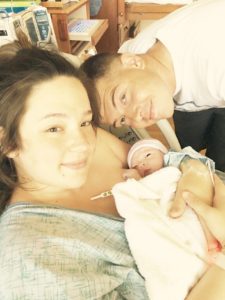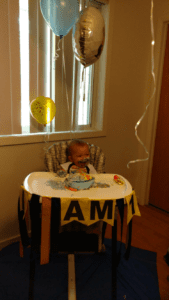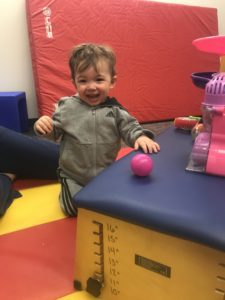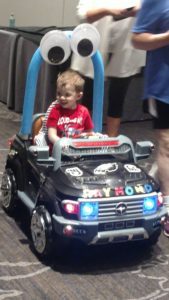In the United States, rare diseases are defined as those affecting fewer than 200,000 people. In the cases of ultra-rare conditions, there is often even less research, less resources, and less support. Alexandra (Alex) Gaudlap is working to change the conversation around rare diseases and raise increased awareness – both for her son’s ultra-rare VAMP2 diagnosis, and for other families within this sphere.
Currently, there are only 20 diagnosed cases of VAMP2 worldwide. Raymond, Alex’s son, was the tenth person diagnosed. To Alex, this makes the need for awareness even more important; best helping those affected means speaking up, sharing her son’s story, and advocating for increased research. And though this journey has not been easy, it will all be worth it if Alex can make a change for even one person, one family. She shares:
“After Raymond’s diagnosis, there were a lot of days when I wanted to just give up. But I kept pushing through. I fought through really hard days when I thought I was getting nowhere, but that work paid off. Looking back and seeing where we are now makes me feel good. I want to remind everyone, no matter where they are on their journey, to not give up. Fight for your child.”
Recently, Alex and I sat down to discuss the diagnostic odyssey, what we know about VAMP2, upcoming research, and how Raymond is doing today.
Alex and Raymond’s Story
Alex Gaudlap’s journey into the rare disease world began with a whirlwind romance. After meeting her husband, she moved from New Jersey to Virginia with him in 2015; a quick marriage soon followed. Just a few months later, Alex was pregnant with Raymond. But from the very start of her pregnancy, she felt like something was off. She shares:
“I had two early miscarriages, so when I was pregnant with Raymond, I was really in-tune with my body. My motherly instinct was that something wasn’t right. Everyone thought I was nuts. But I never felt him kick. I was reassured through ultrasound that everything was okay, so I trusted what my doctors had to say.”
Raymond was born in Camp Lejeune, NC in 2016 following a normal pregnancy. Alex noticed that he didn’t cry; he just slept a lot from the very beginning. That motherly instinct never really let up. When Raymond was one month old, Alex began pursuing additional care. Since her husband is in the military, she visited pediatricians on the military base who said that Raymond was happy; he was simply taking his time. Specialists seemed to agree.

But when Raymond turned one year old, Alex was even more concerned. She says:
“He wasn’t babbling, talking, walking, or even moving for a good portion of the day. Now I look at my other kids, my son and daughter, who did hit those milestones and realize that my instinct was spot-on.”
So, in 2017, Alex and her family decided to move back to New Jersey to have Raymond evaluated by specialists. Once in New Jersey, they were immediately able to get in touch with a geneticist and a neurologist – and numerous bouts of testing followed.

The Diagnostic Odyssey
Eventually, the battery of tests came back with some answers, though these were somewhat shocking. As Alex explains:
“He had a normal genetic panel, which was really surprising to us. Our geneticist referred us to the Undiagnosed Disease Program at the National Institute of Health, but we needed to wait until Raymond met the age and weight guidelines to officially be able to be evaluated.”
During this period, a routine EEG also showed that Raymond had a rare form of epilepsy, which doctors believed was contributing to his developmental delays. Raymond was placed on Keppra but moved to Topamax after a severe allergic reaction to Keppra.

While the family waited, Raymond received weekly outpatient care with early intervention therapy services. This ultimately led to Raymond being diagnosed with cerebral palsy on his second birthday in 2018. Yet Alex and her husband still knew that there was more going on. At the same time, Raymond seemed to be progressing in some ways. He was able to sit at the table for the first time without assistance and even began working on his gait trainer.

Then, in February 2020, Raymond finally met the weight guidelines to visit the NIH. Alex was thrilled, especially since gaining weight had always been difficult for Raymond. The family packed their bags and headed down to Bethesda to spend an entire week there. Alex shares:
“During this week it was non-stop doctor-to-doctor visits, moving from floor-to-floor. It was extremely stressful, but I see it as one of my greatest gifts. It was truly a gift for me to get there before the pandemic. When being evaluated, we were again told that Raymond had cerebral palsy but that it was actually a symptom of his main diagnosis.”
Doctors encouraged the family to re-run the genetic panel to see if there had been any new genetic disorders discovered since the first test. As Alex shares:
“Most families are unaware that you can re-run a genetic panel once for free, normally two years after the first, without going through insurance. So we did another panel through Ambry Genetics and received the diagnosis of a VAMP2 gene variant in late June 2020. Less than a year after Raymond’s original panel, the first case of VAMP2 was found in Ohio. It still gives me chills thinking about it.”

Take a look at Part 2 of our interview, where Alex discusses what VAMP2 is, research into this condition, launching a foundation, and how Raymond is doing today.


